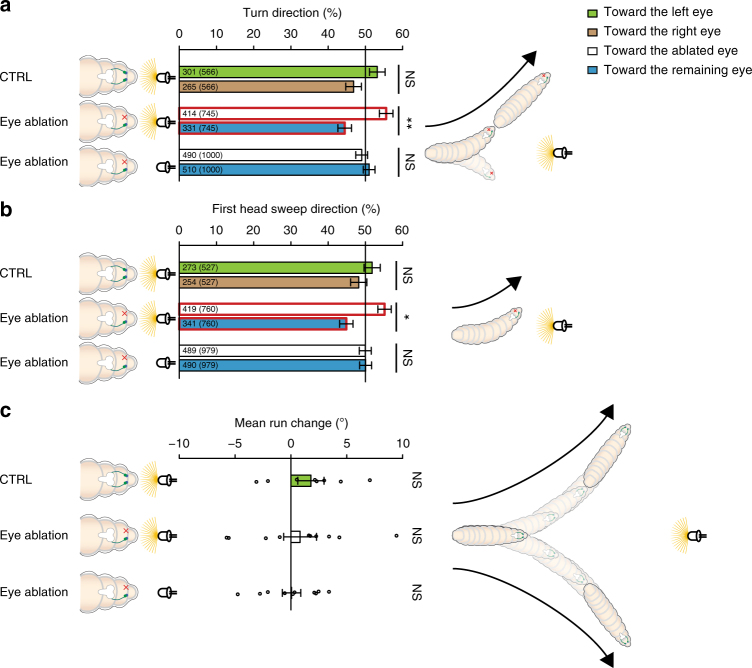Fig. 2.
Unilateral sensing larvae bias their first head sweep direction and their turn direction toward the side of their blinded eye, when they are heading toward a light source. a Bilateral sensing control larvae do not bias their turn direction when they are facing a light source. Unilateral sensing animals bias their turn direction toward the blinded eye when heading toward a light source. These larvae do not bias their turn direction in absence of a light stimulus. Exact binomial test with n = numbers of turns: CTRL: n = 566, p = 0.2118; eye ablation light on: n = 745, p = 0.0079; eye ablation light off: n = 1000, p = 0.548. b Bilateral sensing larvae do not bias the first head sweep direction when facing toward a light source. Unilateral sensing animals bias the first head sweep toward the side of the blinded eye, when they are facing a light source. Exact binomial test with n = numbers of first head sweeps: CTRL: n = 527, p = 0.6495; eye ablation light on: n = 760, p = 0.0156; eye ablation light off: n = 979, p = 1. c Neither bi- nor unilateral sensing larvae bias their steering within runs when heading toward a light source. One sample t-test with n = number of experiments: CTRL: n = 8, p = 0.5139; eye ablation light on: n = 10, p = 0.8865; eye ablation light off: n = 10, p = 0.9516. a–c Benjamini Hochberg procedure was used to adjust p-values for multiple testing. *p < 0.05, **p < 0.01, n = not significant. Exact F-values, t-values and degrees of freedom can be found in Supplementary Table 1. The data show mean and error bars show SEM. a The first number is the number of turns in the indicated direction (please see color code) and the number in brackets is the total number of turns in both directions. b The first number is the number of first head sweeps directed to the indicated direction and the number in brackets is the total number of first head sweeps in both directions. c Circles represent means of individual experiments

